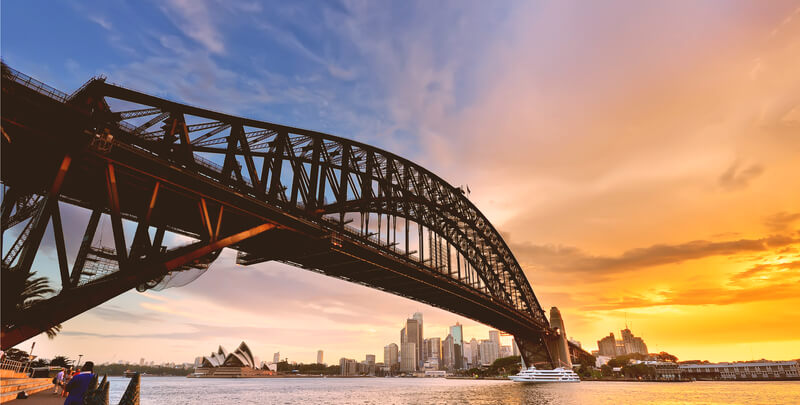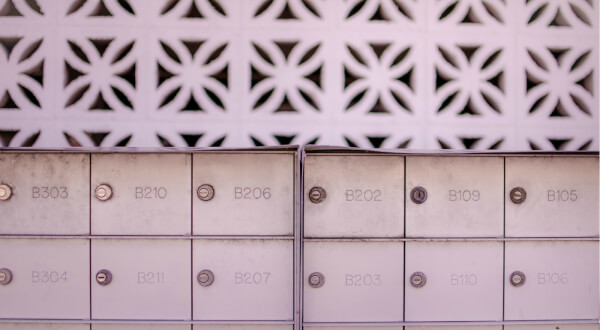Moving to Australia: full expat guide
Everything you need to know about moving to Australia from the USA.

If you think you need to be young to enjoy Australia, think again.
Life down under is perfect for retirees. Not only is the standard of living very high and the healthcare excellent, there’s also lots to see and do. If you’re lucky, you’ll get to meet the kangaroos and koalas up close.
Ready to make the move?
Here’s what you need to know.
While Australian cities may not be anywhere as expensive as London or New York, the cost can still be surprisingly high.
Here’s a breakdown of living expenses in Sydney, one of Australia’s most popular and expensive cities:
| Average monthly expenses | Cost (AUD) |
|---|---|
| Rent - 3 bedroom apartment in city outskirts | 2915 |
| Basic utilities (water, electricity, refuse) | 184 |
| Internet | 66 |
| Groceries | 400 |
| Dining out for 2 people (mid-range restaurant) | 80 |
| Healthcare(basic health insurance + additional expenses) | 65 |
| Fitness / social club membership | 73 |
| Other expenses | 200 |
| Monthly total: | 3983 |
Details from Numbeo and Just Landed as at April 2017
This is a conservative estimate for one person, and the cost may be considerably higher depending on your lifestyle.
The general cost of living doesn’t vary too much between cities. However, rental prices are generally higher in Sydney than in the other main cities.
A couple would need an annual income of about AUD 59,000 in order to live comfortably. This works out at approximately AUD 5,000 a month. You’ll also need to take the annual rate of inflation into account.
Depending on your circumstances and family connections, you have a number of retirement visa options.
Each visa comes with its own fees and charges, as well as a series of additional costs. These include the cost of medical and police checks.
You can apply for a visa either before you move to Australia or even if you’re already there. There are various bridging visas that will allow you to stay in the country while your retirement visa is being processed.
To qualify for this visa, you’ll need to satisfy the following requirements:
You’ll also need to invest an additional AUD 750,000 in your sponsored Australian state.
This type of visa is temporary, so you won’t be entitled to state-sponsored healthcare (Medicare). You’ll need to prove you've adequate private health insurance.
However, if your home country has a reciprocal health agreement with Australia, you’ll be entitled to emergency care costs under Medicare.
An investor visa is valid for an initial period of four years. You’ll then need to renew it every two years. It costs AUD 13,480; of which AUD 490 is payable on application and AUD 12,990 is due before the visa is granted.
You can read more about the investor retirement visa program here.
You can apply for this visa if you've reached Australian retirement age and have children who are Australian citizens or have lived there permanently for more than two years.
You’ll also need to meet health and character requirements, be sponsored by an Australian citizen or permanent resident and pass the ‘balance of family’ test, which means that a majority of your children live permanently in Australia.
This visa costs AUD 5,540. You’d make an initial payment of AUD 3,695 and a second installment of AUD 1,845.
You can read more about a Contributory Aged Parent visa here.
The Aged Parent visa has the same conditions as the Contributory Aged Parent visa. However, you must be physically present in Australia on another visa when you apply.
There’s significant demand for this visa - you could be looking at a wait of up to 30 years. It’s also rather expensive. You must pay an initial fee of AUD 5,805 and a second instalment of AUD 2,065.
How you’re taxed will depend on whether you’re a resident or a non-resident.
In Australia, determining residency for tax purposes is a complicated affair. You may be a non-resident for tax purposes even though your visa says you’re a resident, and vice versa. Thankfully, the Australian Tax Office has a tool you can use to determine your tax status.
As a non-resident, you’re only taxed on your Australian income. This means you won’t be taxed on your foreign pension. However, you may be taxed on any interest your pension generates in Australia.
The non-resident tax rates for 2016-17 are:
| Taxable income (AUD) | Tax on this income |
|---|---|
| 0 - 87,000 | 32.5c for each $1 |
| 87,001 - 180,000 | $28,275 plus 37c for each $1 over $87,000 |
| 180,001+ | $62,685 plus 45c for each $1 over $180,000 |
Details from Australian Taxation Office as at April 2017
As an Australian resident, you’ll need to pay Australian income tax on all your income worldwide. The current tax bands are the following:
| Taxable income (AUD) | Tax on this income |
|---|---|
| 0 - 18,200 | 0 |
| 18,201 - 37,000 | 19c for each $1 over $18,200 |
| 37,001 - 87,000 | $3,572 plus 32.5c for each $1 over $37,000 |
| 87,001 - 180,000 | $19,822 plus 37c for each $1 over $87,000 |
| 180,001+ | $54,232 plus 45c for each $1 over $180,000 |
Details from Australian Taxation Office as at April 2017
You won’t pay tax on your foreign pension if you transfer it to an Australian superannuation fund within six months of your arrival. Transfer it after that period and you’ll be charged 15% tax on the difference between the balance of your fund at the time of transfer and the final balance once you become an Australian resident.
The amount you can transfer is capped at AUD 540,000. You’ll need to make multiple transfers if your pension exceeds this amount.
If you’re transferring a UK pension, make sure your chosen Australian superannuation fund provider is a qualifying recognised overseas pension scheme (QROPS) registered with HMRC.
You cannot transfer your UK state pension to an Australian superannuation fund. However, you can arrange for it to be transferred to your Australian bank account every four to thirteen weeks at the exchange rate used by the UK government.
Australia’s public healthcare system, called Medicare, is only available for residents. The system doesn’t cover dental, eye and ear care, physiotherapy or ambulance costs. So even if you qualify for Medicare, it’s still a good idea to buy basic private insurance cover.
You may also be eligible for a Commonwealth Seniors Health Card if you meet the following requirements:
The card entitles you to a range of concessions, including cheaper prescriptions and doctor appointments.
The most popular health insurance providers in Australia are:
The exact details of cover can vary depending on the provider and which state you’re in. Broadly speaking, they all offer the same three main types of policy: hospital, general or combined.
Hospital policies cover the cost of hospital stays; including accommodation, treatment, and depending on which part of Australia you live in, the cost of an ambulance. General policies only cover the costs excluded from Medicare.
Combined policies, as the name suggests, cover hospital and general health care costs. You can purchase a combined policy from one provider or a hospital policy and a general policy from two different providers.
The cost of a basic policy will depend on a number of factors, including your general state of health, the level of cover and your choice of deductible. Policies start at around AUD 29a month for a basic general policy (the lowest level of cover possible). You can compare health insurance policies and prices here.
Australia has a floating exchange rate, which means the Australian Dollar’s value can go up or down depending on the state of the international markets.
If you plan on moving to Australia on a permanent basis, it makes sense to transfer all your pension, so you’ll only have to deal with the exchange rate once. Besides, you’ll pay no tax (provided you make the transfer within six months of your arrival).
You should make sure you transfer your money using the mid-market rate, as this is the fairest exchange rate you can possibly get. To ensure you get mid-market rate applied to your transfer, consider using Wise, as they not only use this rate but they also save you on international transfer fees by using local transfers on the sending and receiving end.
*Please see terms of use and product availability for your region or visit Wise fees and pricing for the most up to date pricing and fee information.
This publication is provided for general information purposes and does not constitute legal, tax or other professional advice from Wise Payments Limited or its subsidiaries and its affiliates, and it is not intended as a substitute for obtaining advice from a financial advisor or any other professional.
We make no representations, warranties or guarantees, whether expressed or implied, that the content in the publication is accurate, complete or up to date.

Everything you need to know about moving to Australia from the USA.

Having a new baby brings joy and excitement. Along with the excitement, there’s bound to be stress. If you’re an expat and an expectant parent, you face a...

Australia is a place of abundant sunshine and stunning natural scenery. If you love being outside, Australia might be the perfect home for you. The Land Down...

There are lots of people choosing to make their home in Australia. But having the right to live and work there isn’t the same as being an Australian citizen -...

The Land Down Under is a popular destination for tourists from all over the world, as well as expats. With bustling cities and stunning natural scenery, it’s...

There’s a lot that’s great about moving to Australia. And even though getting high-quality healthcare might not be quite as much fun as a day on Bondi Beach...